When to Seek Professional Help for Cat Socialization
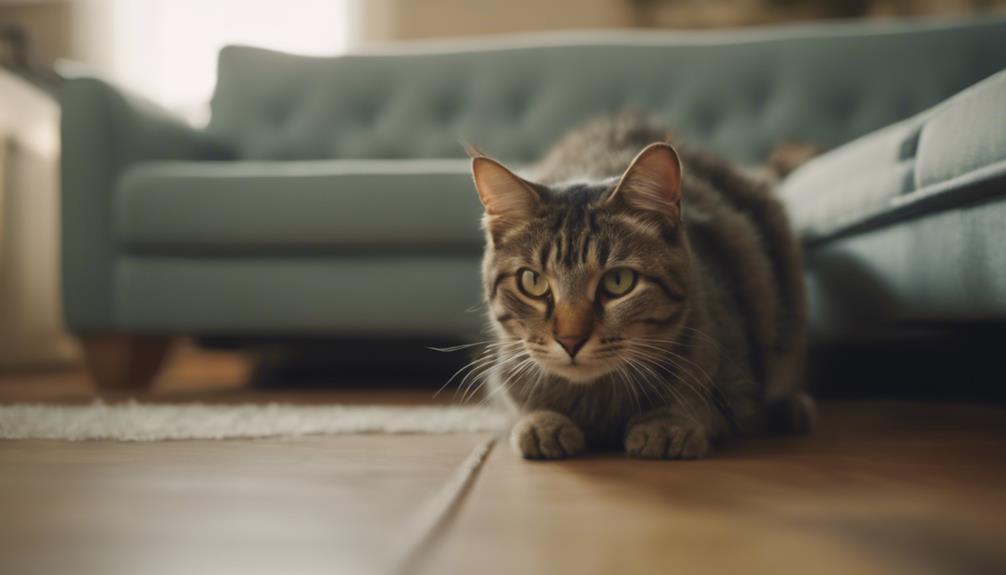
When it comes to cat socialization, there are certain signs that may indicate the need for professional help. Aggressive behavior towards humans or other animals, excessive fear or anxiety, and persistent avoidance of social interaction are all red flags that should not be ignored. Seeking professional help from a veterinarian or animal behaviorist is important in these situations to address the underlying issues and improve the cat's quality of life. Ignoring these signs can lead to further behavioral problems and a strained relationship between you and your cat.
Understanding when to seek expert intervention is crucial for a harmonious relationship with your cat. By recognizing the signs that professional help may be needed and taking action promptly, you can ensure that your cat receives the support and guidance necessary to thrive in a social environment. Don't hesitate to reach out to a qualified professional if you have concerns about your cat's socialization – doing so can make a significant difference in your cat's well-being and happiness.
Behavioral Changes
When cats undergo socialization, they may exhibit behavioral changes that require attention and understanding from their owners. Trust building exercises are essential in helping cats adapt to new environments and people. Positive reinforcement, such as treats or affection, can encourage desired behaviors and help the cat feel more secure. Cat desensitization techniques, like gradually introducing them to stimuli that cause fear or anxiety, can help reduce their stress levels and build confidence over time.
Understanding cat body language is crucial in deciphering their emotions and needs during the socialization process. Cats communicate through their tail movements, ear positions, and vocalizations. It's essential for owners to pay close attention to these cues to ensure the cat feels safe and comfortable in their surroundings.
Lack of Progress
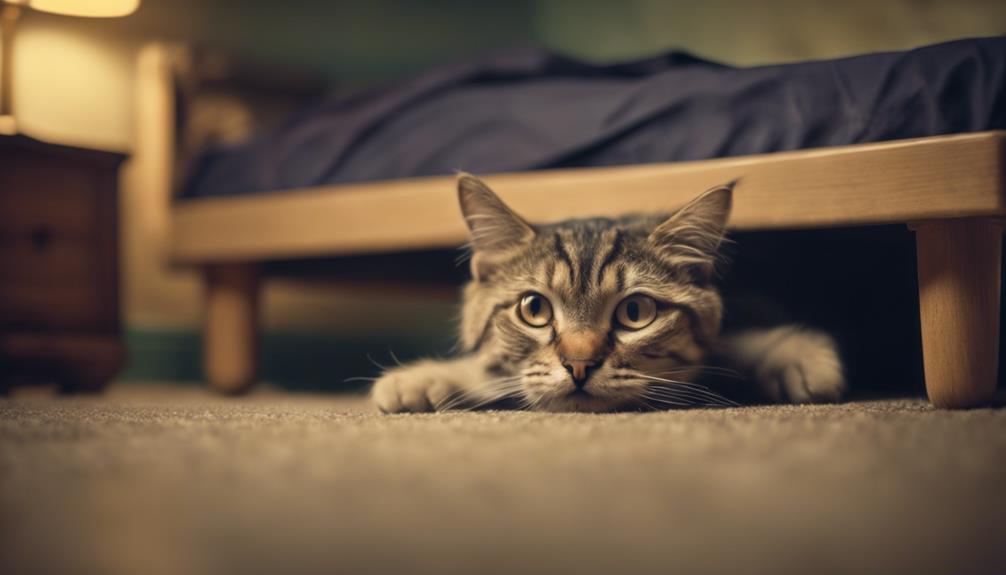
Experiencing a lack of progress in your cat's socialization journey can be disheartening, but it's important not to lose hope and to continue implementing patience and understanding in your efforts. Slow progress is a common challenge when socializing a cat, and it's crucial to remember that each feline is unique and may require different amounts of time to adjust to new situations.
Frustration building is natural, but remaining calm and consistent is key to helping your cat feel more comfortable over time.
If you find that despite your best efforts, your cat isn't making the strides you'd hoped for, it may be time to reassess your approach. Consider seeking guidance from a professional who can provide tailored advice based on your cat's specific needs. They can offer valuable insights and techniques to help overcome obstacles and make progress in your cat's socialization journey.
Aggressive Behavior
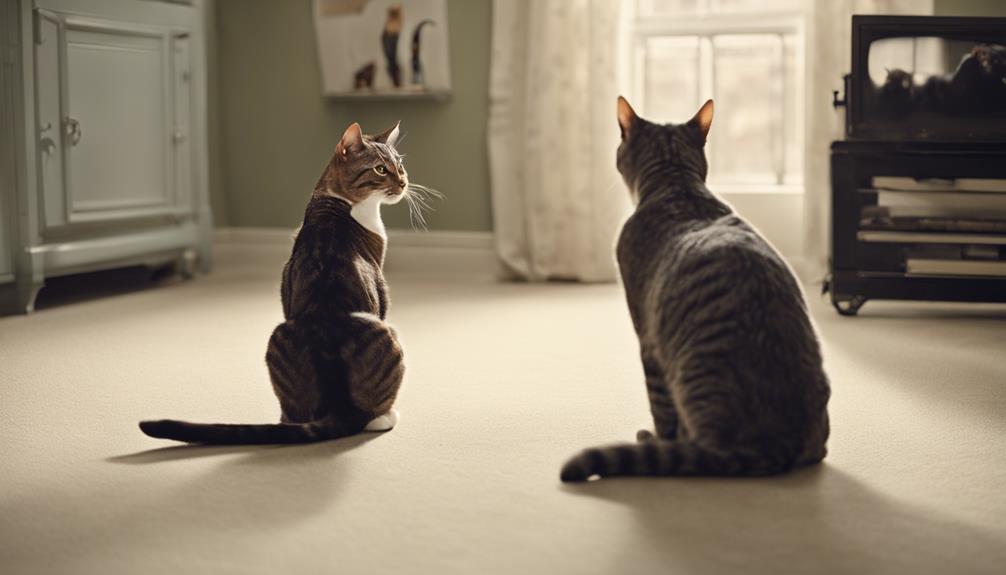
Struggling to cope with aggressive behavior in your cat can be overwhelming, but with the right approach and understanding, you can work towards resolving this challenging issue. Aggressive behavior in cats can manifest through aggressive play during socialization or due to fearful interactions and adjustment issues. Cats may display aggression towards humans or other animals, which can be distressing for pet owners. It's essential to address aggressive behavior promptly to prevent any potential harm.
When dealing with aggressive behavior in cats, it's crucial to first rule out any underlying medical conditions that could be causing discomfort or pain. Once medical issues are ruled out, working with a professional behaviorist can help identify triggers and develop a tailored plan to address the aggression effectively. Implementing positive reinforcement techniques, providing a safe environment, and gradually exposing the cat to socialization opportunities can aid in modifying aggressive behaviors over time. Remember, patience and consistency are key in helping your cat overcome aggressive tendencies and thrive in a harmonious environment.
Fearful Reactions
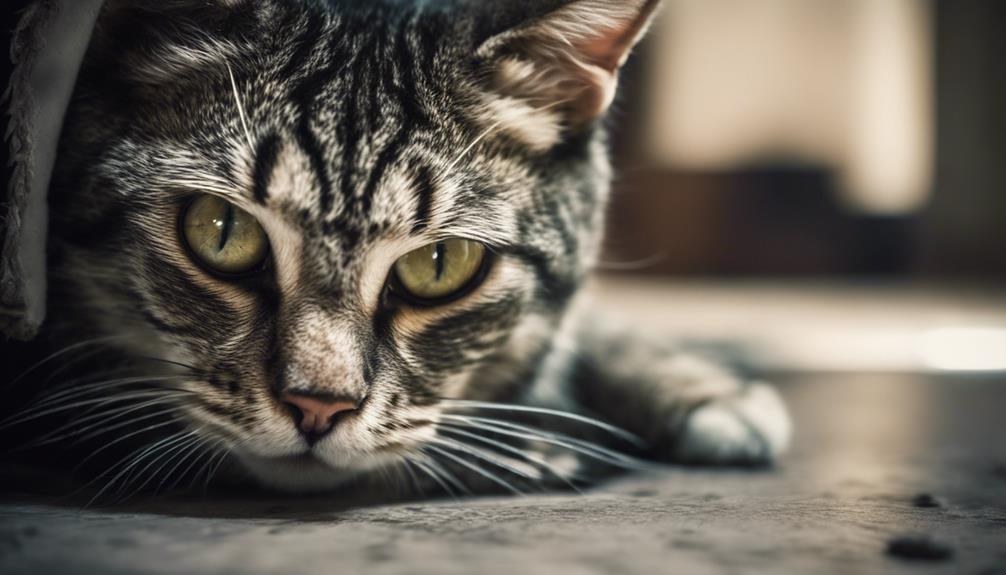
If your cat exhibits fearful reactions, it's important to approach the situation with empathy and understanding to help them feel more secure in their environment. Fearful behavior in cats can stem from various reasons, including past traumas, lack of socialization, or sensitivity to certain stimuli. To address these reactions effectively, consider the following:
- Trust building: Take things slow and allow your cat to approach new situations at their own pace. Building trust through positive reinforcement techniques like treats and gentle petting can help them feel more comfortable and secure.
- Create a safe space: Provide hiding spots or elevated perches where your cat can retreat to when feeling overwhelmed. Having a designated safe space can help reduce their anxiety levels.
- Calming techniques: Utilize pheromone diffusers or calming sprays to create a soothing environment for your cat. Additionally, engaging in interactive play sessions can help release pent-up energy and reduce stress.
- Consult a professional: If your cat's fearful reactions persist despite your efforts, seeking guidance from a professional, such as a veterinary behaviorist, can provide tailored strategies to help your feline companion overcome their fears.
Persistent Issues
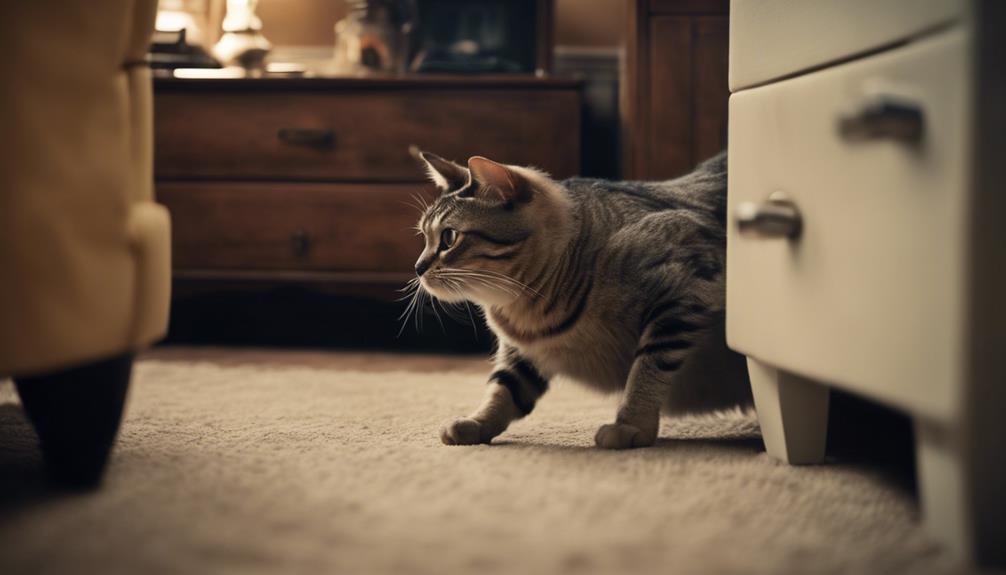
Addressing persistent issues in a cat's socialization process can be challenging for pet owners. These problems may manifest as behavioral challenges that require professional intervention.
Recognizing and tackling these issues early on can lead to a more positive and harmonious relationship between the cat and its human companions.
Behavior Challenges
Dealing with persistent behavior challenges in cats can be a complex and frustrating experience for pet owners who are dedicated to their feline companions' well-being. When facing such difficulties, it's crucial to approach the situation with patience and consistency in training.
Here are some key points to consider:
- Socialization Techniques: Implement gradual introduction methods to help your cat feel more comfortable in various social situations.
- Positive Reinforcement: Use rewards and praise to encourage desired behaviors and discourage negative ones.
- Environmental Enrichment: Provide engaging activities and spaces to keep your cat mentally stimulated.
- Professional Guidance: Consider seeking advice from a veterinarian or animal behaviorist for tailored solutions.
Professional Intervention
When facing persistent behavior challenges in cats, seeking professional intervention can provide tailored solutions and guidance for pet owners dedicated to their feline companions' well-being. Professional behaviorists or trainers can offer expertise in implementing consistent reinforcement and gradual exposure techniques to help your cat adjust positively. By utilizing positive reinforcement and desensitization techniques, these professionals can create customized plans to address specific issues like aggression, fear, or excessive shyness. Through structured sessions and personalized strategies, they aim to foster a harmonious relationship between you and your cat. Remember, seeking professional help is a proactive step towards understanding your cat's needs better and enhancing their quality of life.
| Professional Intervention Strategies | Description | Benefits |
|---|---|---|
| Consistent reinforcement | Regularly applying desired behaviors | Promotes learning and consistency |
| Gradual exposure | Slowly introducing stimuli to reduce fear | Helps in overcoming phobias |
| Positive reinforcement | Rewarding good behavior | Encourages desired actions |
| Desensitization techniques | Gradually exposing to fears to reduce sensitivity | Minimizes anxiety and stress |
| Tailored behavior plans | Customized strategies for specific issues | Addresses individual needs effectively |
Multiple Cat Dynamics
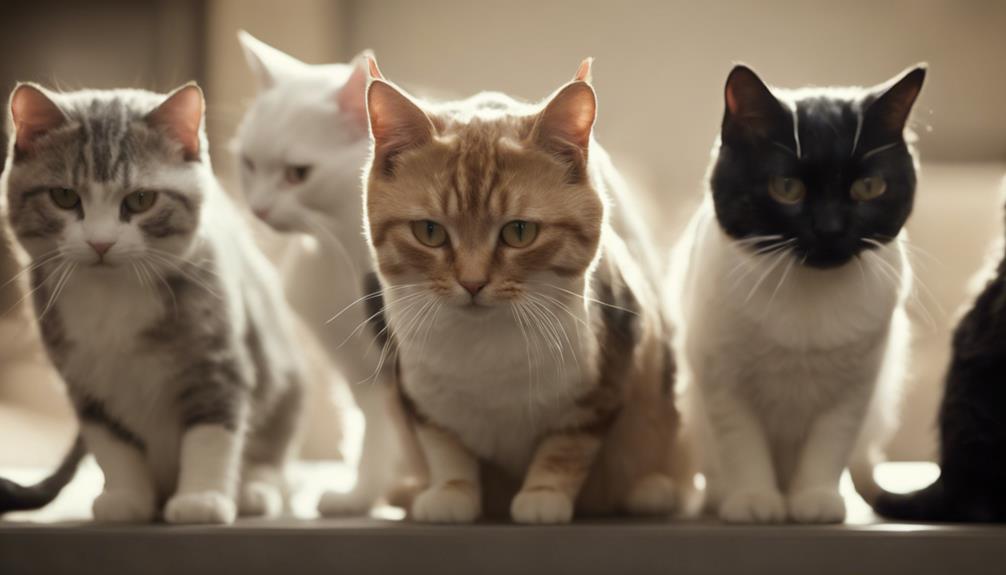
When managing multiple cats in a household, understanding the cat hierarchy within the group is crucial. Territory disputes and marking behaviors can often lead to tension among feline companions.
Encouraging socialization through interactive play can help alleviate conflicts and strengthen bonds between cats.
Cat Hierarchy in Groups
Understanding the intricate dynamics of cat hierarchy within a group setting is crucial for fostering harmonious relationships among multiple feline companions. When observing group dynamics and social interaction among cats, the following key points should be considered:
- Established Pecking Order: Cats often establish a hierarchy based on factors like age, personality, and confidence levels.
- Role of Socialization: Proper social interaction from an early age can help prevent conflicts and promote better group dynamics.
- Conflict Resolution: Cats may display dominance through behaviors like staring, hissing, or physical altercations to assert their rank.
- Human Intervention: Providing a stable environment, offering individual attention, and monitoring interactions can help maintain a peaceful cat hierarchy within a group.
Territory Disputes and Marking
Navigating the intricate dynamics of territory disputes and marking is essential for understanding multiple cat dynamics in a shared environment. To prevent marking and manage territorial behavior, creating a harmonious space for all cats is crucial. Utilizing socialization techniques and bonding strategies can help reduce conflicts and promote a peaceful coexistence among your feline companions.
| Marking Prevention | Territory Management |
|---|---|
| Use pheromone diffusers | Provide multiple litter boxes in different areas |
| Neuter or spay cats | Offer vertical spaces like cat trees for climbing |
| Clean marked areas thoroughly | Rotate toys and bedding to mix scents |
| Utilize positive reinforcement | Establish separate feeding stations |
Socialization Through Play
Engaging in interactive play sessions with your cats can foster strong bonds and enhance social dynamics among multiple feline companions. Here are some tips to help you navigate playtime with your cats for improved socialization:
- Use Interactive Toys: Incorporate toys that encourage engagement and movement to stimulate your cats mentally and physically.
- Offer Positive Reinforcement: Reward good behavior during play sessions to reinforce positive social interactions among your cats.
- Implement Play Therapy: Structured play sessions can help improve social skills and reduce tension between multiple cats in the household.
- Observe Social Interactions: Pay attention to how your cats interact during play to identify areas for improvement and assess their progress in building better relationships.
Unpredictable Situations
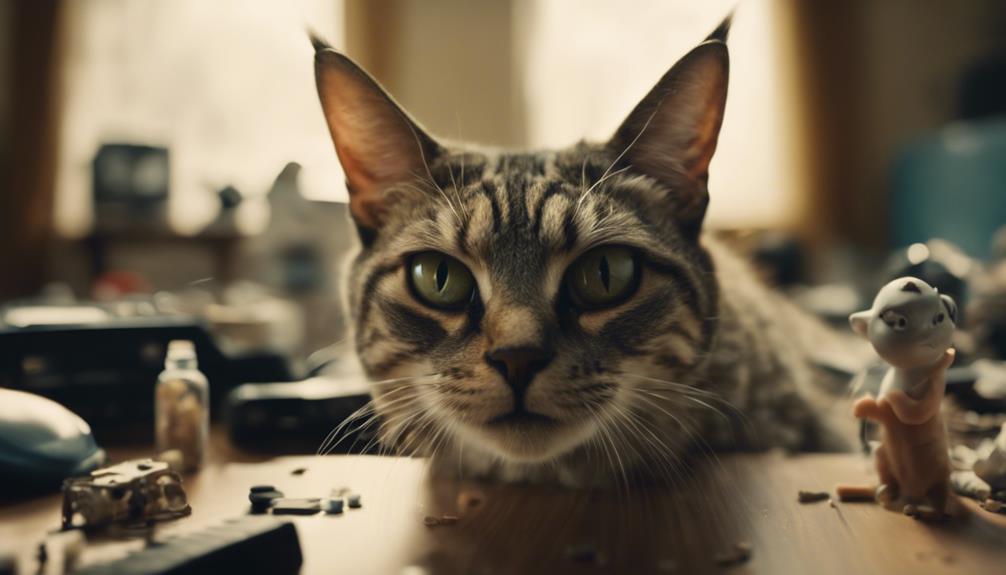
In unfamiliar environments, cats may react unpredictably due to heightened stress levels. This unpredictability can manifest in various ways, such as aggression, hiding, or excessive vocalization. When faced with these situations, it's essential to approach with patience and understanding.
Trust-building activities and bonding exercises, like interactive play sessions and providing comfortable hiding spots, can help alleviate some of the stress your cat may be experiencing.
If your cat displays unpredictable behavior in unfamiliar situations, seeking professional help may be necessary. A professional can assess the situation, provide guidance on how to manage your cat's stress, and offer tailored solutions to help your feline friend feel more secure.
Frequently Asked Questions
How Long Does It Typically Take for a Cat to Fully Adjust to New Socialization Techniques?
Adjusting to new socialization techniques varies depending on the cat's personality and past experiences. It can take weeks to months for full adjustment. Success indicators include increased social interactions and reduced stress behaviors. Training methods and behavior modification play crucial roles.
Are There Any Specific Breeds of Cats That May Require More Professional Help With Socialization?
Specific breeds like Siamese or Bengals may present socialization challenges requiring professional assistance. Older cats may benefit from intensive techniques to overcome fear or aggression. Seeking help early can improve outcomes for all involved.
What Are Some Common Mistakes That Cat Owners Make When Trying to Socialize Their Cats?
When socializing cats, common mistakes include misinterpreting behavioral cues and using ineffective training methods. Understanding body language is crucial for success. Professional help may be necessary if these challenges persist despite efforts to improve the cat's socialization skills.
Can Professional Help Be Beneficial for Older Cats Who Have Socialization Issues?
When older cats struggle with socialization, behavioral therapy and professional assistance can provide invaluable support. Understanding and implementing tailored socialization techniques can make a significant difference in helping these cats feel more comfortable and secure in their environment.
How Can Cat Owners Determine When It's Time to Switch to More Intensive Socialization Techniques With the Help of a Professional?
Understanding behavioral signs like aggression, fear, or excessive hiding can signal the need for professional help in cat socialization. Challenges may arise due to slow progression. Seeking expert solutions can provide guidance and support for both the cat and owner.











